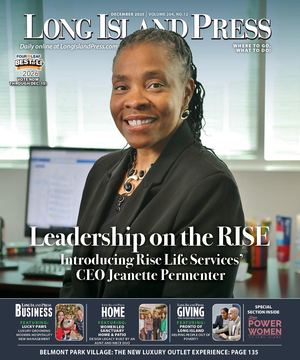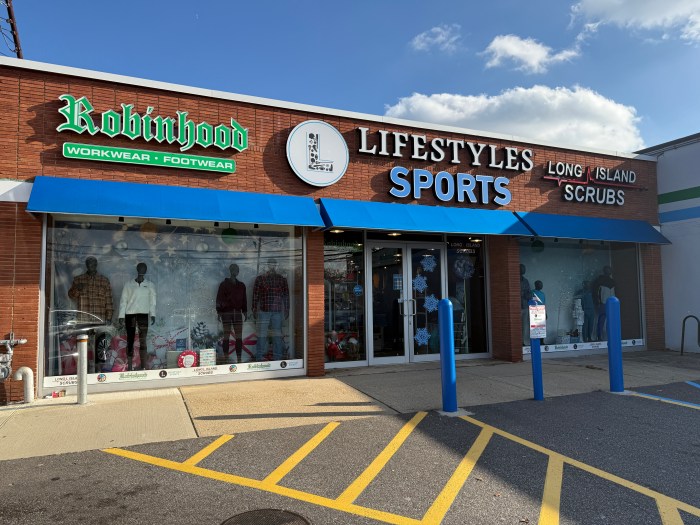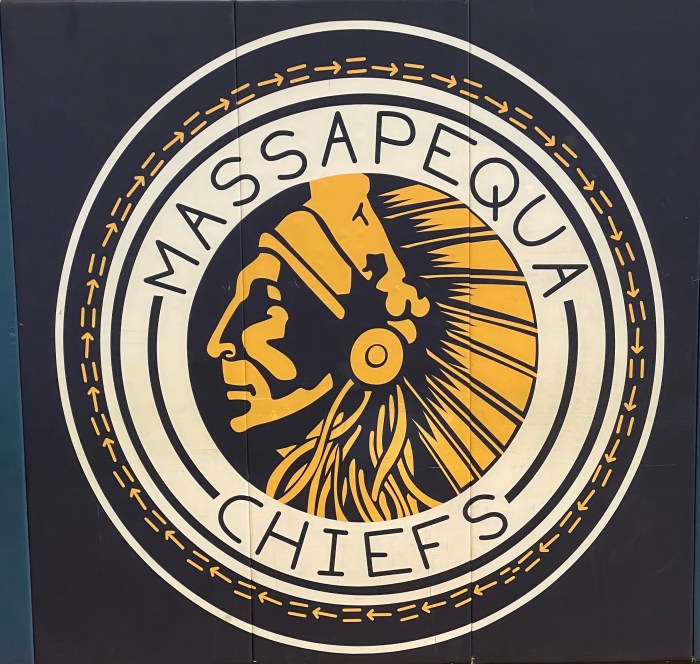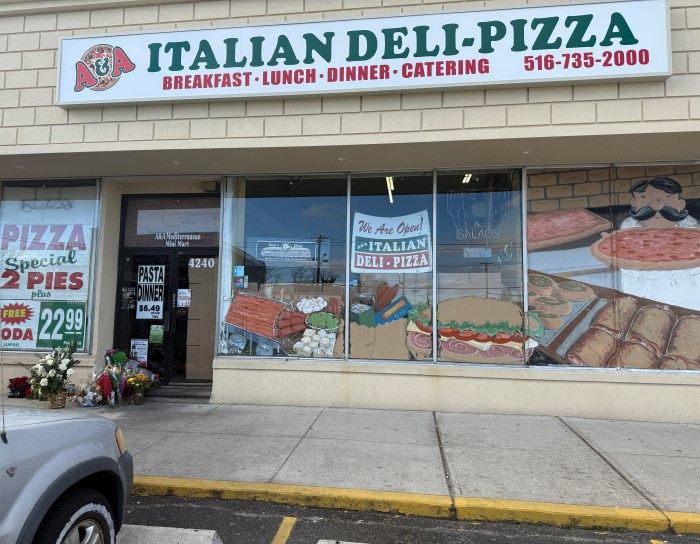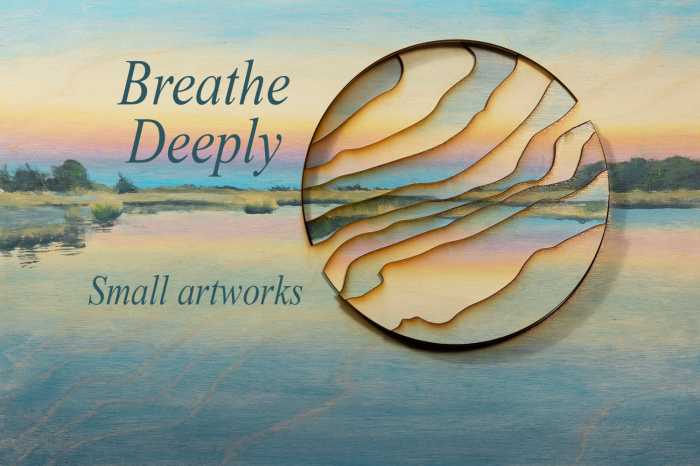With Long Island Sound as a backdrop, the National Fish and Wildlife Foundation held a press conference last week to issue a report card on the Sound and Hempstead Harbor at the Webb Institute in Glen Cove. Speakers included Congressman Steve Israel, Legislator Delia DeRiggi-Whitton, Supervisor Judi Bosworth, Dr. William Dennison from the University of Maryland and David Okorn, executive director of the Long Island Community Foundation. The elected officials spoke first, before the State of the Sound was discussed.
“Nine million people live on the Long Island Sound watershed. A recent study states that 190,000 jobs are directly tied to the ‘natural capital’ of the Sound and its basin and $5.2 billion in direct wages are paid from activities relating to the Sound,” said Israel. “We need to protect the Sound and the economy around it. This report card makes it clear that while progress has been made to improve the water quality, more must be done to reserve this economic engine and local treasured water and coast line.”
Israel is also attempting to pass the Long Island Sound Restoration and Stewardship Act to reauthorize the Long Island Sound Restoration Act and the Long Island Sound Stewardship Act, which expired in 2010 and 2011 respectively.
DeRiggi-Whitton said that Crescent Beach has been closed for seven years due to faulty septic tanks. She said with the help of Mayor Reggie Spinello and legislation, $2 million was secured for a feasibility study and to complete the Sea Cliff Avenue project and the construction drawings. There was also a grant for $10 million to construct sewers that will clean up the harbor. She passionately continued by saying that her district is literally surrounded by the harbor on both shores and how for 45 years has lived within a mile of the water.
Bosworth said turning the tide on water quality doesn’t happen overnight, but in recent years the dedication and hard work of so many has begun to change that. She mentioned how the waters were teeming with fowl, fish and the recent sightings of beluga whales. She referred to the report card and evaluation and improvement of the nitrogen and oxygen levels over the past 20 years were paying off. This was through improved protection of storm water runoff, shoreline preservation and shellfish seeding. She finished by saying how the Hempstead Harbor trail was recently opened and how they are trying to make it a premiere recreational destination.
Dr. Bill Dennison was the speaker who discussed the report card using placards. He said the westernmost portion of the sound near New York City scored the worst mark, getting an F. The Sound on the eastern area of Long Island, Connecticut and Rhode Island received an A and the western and middle area received a rating of B- and B, respectively. Hempstead Harbor averaged a D+. Grading systems were based on a criteria of five tests. These included dissolved oxygen, nitrogen, phosphorus, chlorophyll A and water clarity.
“The big story we’ve got from this report card is one of pollution and dilution coming from either end of the Sound,” Dennison said. “The Long Island Sound goes from highly urbanized, highly impacted to amazingly clean and well-flushed in the East End…It will be challenging to protect and restore the Long Island Sound in the face of population pressure and climate change, but it is heartening that there are still regions in the Sound with good water quality, thriving eelgrass meadows and abundant fish and shellfish.”
About the report card, Dennison said: “By creating this scientifically based report card process, we can track our progress in protecting and restoring the Sound.”
He commented on improvements that allow for thriving bird life, swimming and eating shellfish. [He did caution that swimming can be a problem after the rains, due to runoff]. Of the tests, he said clarity fails and there is a nutrient problem that needs reducing. He concluded by saying the Long Island Sound is an iconic ecosystem much like the Chesapeake Bay and it needs protection and monitoring.
David Okorn was the last speaker. He said the report card is a baseline to move forward. A healthy Sound is a vital asset of the regional economy and he noted that the LI Sound Funders Collaborative supported the development of the report card. He stressed people could help in the clean-up by reducing the amount of fertilizer and also putting it down at the right time of the year. He said those with septic tanks should have them pumped every three to five years. Lastly, toxic chemicals and drugs should be disposed of properly so it does not migrate back to the Sound. He emphasized people should take personal action.
After the conference, Mayor Reginald Spinello, whose city of Glen Cove is on both Hempstead Harbor and the Long Island Sound, said, “The timing of today’s State of the Sound dovetails nicely with last week’s Nassau County Legislature award of $2 million for the design of a sewer management system along Hempstead Harbor from Glen Cove to Roslyn. With 14 miles of shoreline and 32-square miles of water to watch over and an exciting new waterfront development on its way, water quality, safety and the environmental stability of the Long Island Sound are always top priorities for Glen Cove.”
Eric Swenson, director of the Hempstead Harbor Protection Committee, commented on the
D+ rating. “Today, water quality in Hempstead Harbor is vastly improved over conditions found 20 to 30 years ago, thanks to a cooperative teamwork of local governments and citizen groups,” Swenson said. “Wildlife, such as osprey, cormorants, diamondback turtles and Peregrine falcons are back and thriving, thanks to the restoration of habitat areas and healthy dissolved oxygen levels. Fishing and kayaking in the harbor are at unprecedented levels. In 2011, we became the first harbor in decades to reopen to shell fishing in the state and in 2014 became the state’s largest producer of hard clams. Nevertheless, the legacy of nearly 400 years of human use of the harbor has no doubt left its impacts on our water quality. There will continue to be challenges, such as improving water clarity that were revealed by the report card released today. I am confident that we can meet these and any other challenges as long as we continue the cooperative relationships between local governments, citizen groups and the residents and businesses that all have a stake in the harbor.”
Carol DiPaolo of Coalition to Save Hempstead Harbor said, “The report card process was intended to help focus on some of the great successes that we have had around Hempstead Harbor as well as point to areas where more work is needed or more data must be collected. As it is, the report card gives a grade to only the ‘inner harbor’ and what may be lost in the D+ grade is recognizing the tremendous achievements that have taken place throughout the harbor over the last 30 years. For those who live around Hempstead Harbor and use it for a wide range of recreational activities, there is no doubt that the harbor has experienced a tremendous turnaround and now sustains an incredible diversity of fish and other marine life and wildlife. But more needs to be done to protect and improve both Hempstead Harbor and Long Island Sound so that we can continue to enjoy these incredible resources.”
The Long Island Sound and Hempstead Harbor report card is easy to follow and detailed. This complete report can be reviewed at www.longislandsound.ecoreportcard.org.
